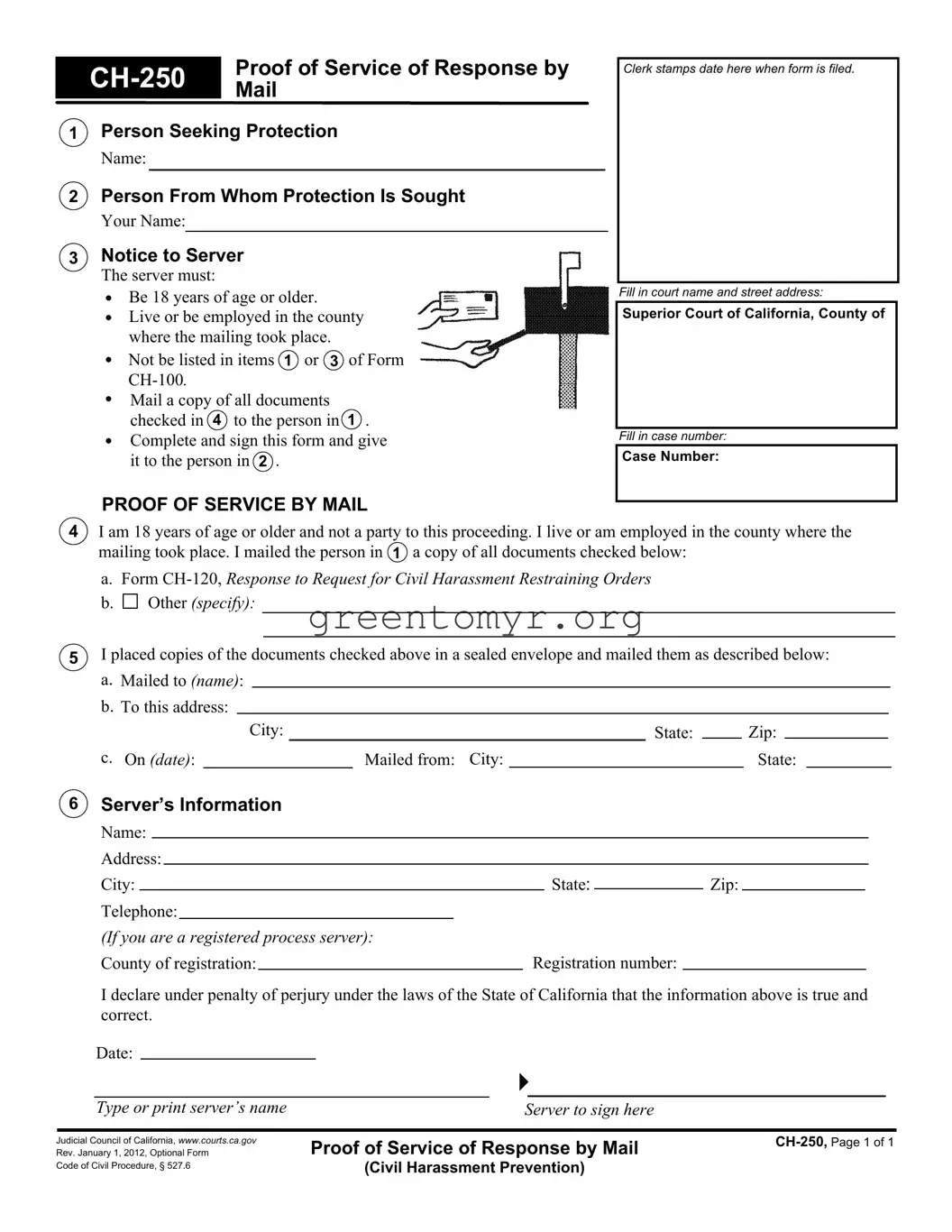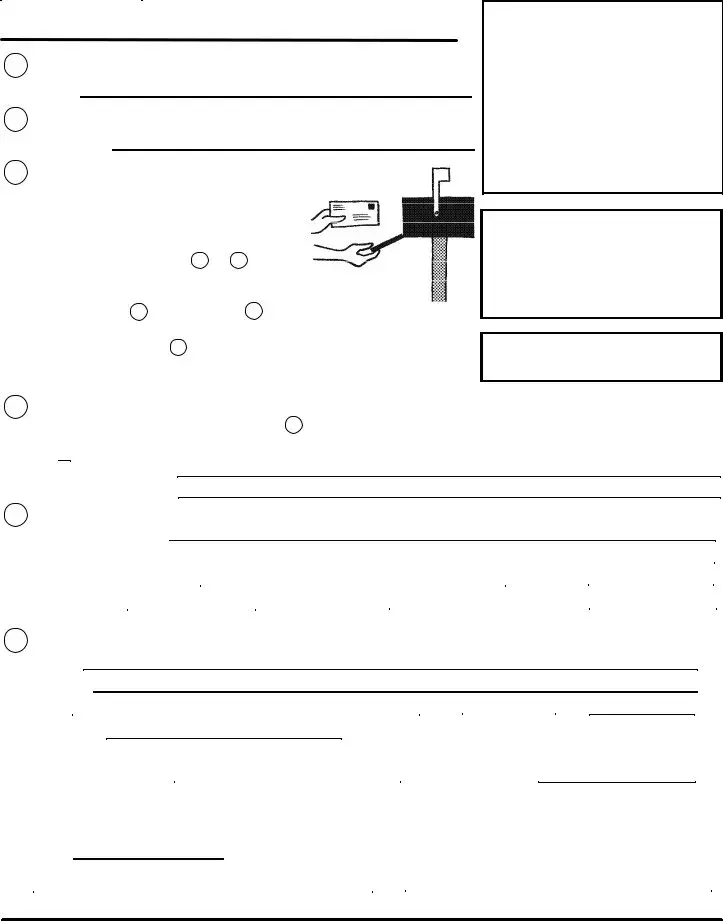The CH-250 form, also known as the Proof of Service of Response by Mail, is a document used in the state of California. It verifies that a response to a notice or request for a civil harassment restraining order has been mailed to the appropriate parties. This form is an essential part of the legal process, ensuring that all parties are informed and that notices have been sent correctly.
Only specific individuals can serve documents and complete the CH-250 form. The server must be:
-
At least 18 years old.
-
A resident or employed in the county where the mailing occurred.
-
Not involved in the case as a party.
This ensures an unbiased process, allowing for fair and impartial service of documents.
The server must mail a copy of all documents checked in section 4 of the CH-250 form. This typically includes:
-
Form CH-120, which is the Response to Request for Civil Harassment Restraining Orders.
-
Any additional documents specified by the server.
It’s vital to ensure that the correct documents are sent to the individual named in section 1.
How should the documents be mailed?
Documents should be placed in a sealed envelope and addressed appropriately. The server needs to fill out the mailing details in section 5 of the form. This includes:
-
Name of the person receiving the documents.
-
Mailing address, including city, state, and zip code.
-
The date they were mailed.
-
The city and state from which the documents were mailed.
Accurate completion of these details is crucial for the proof of service to be valid.
What if the server is a registered process server?
If the server is a registered process server, they need to provide their registration details on the CH-250 form. This includes the county of registration and the registration number. This information adds an additional layer of credibility to the service process.
After completing the CH-250 form, the server must submit it to the appropriate court. The form will be stamped by the clerk with the date when it is filed. Make sure that the court name, address, and case number are filled in correctly. Filing the form promptly ensures compliance with court requirements.
If the CH-250 form is not completed correctly, it can lead to delays in the legal process. A properly filled form is essential for proving that all parties received the required documents. Inaccuracies may result in the case being dismissed or further legal complications.


